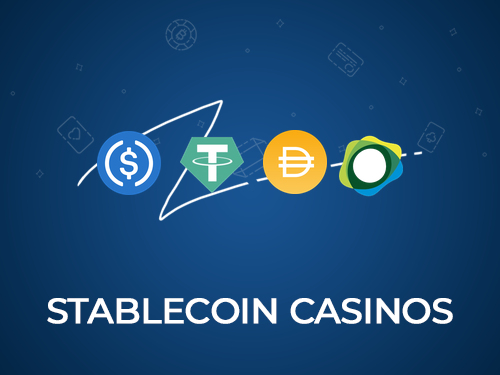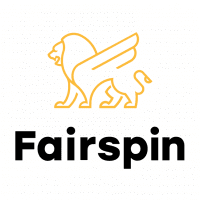Stablecoins offer that stability to the marketplace as it is a cryptocurrency that is secured to a stable asset or a fiat currency. A great example of this is MakerDAO’s DAI, a collateralized Stablecoin that is backed by ETH. MakerDAO and the DAI credit system is the first decentralized autonomous organization to manage the price stability of a stablecoin. As a signal to validate their effort, VC firm a16z recently invested $15 million into MakerDAO from their $300 million crypto fund.
What are stablecoin casinos?
While many cryptocurrency-based online casinos are available for gamblers to enjoy, with them also comes the volatility that has been long associated with the cryptocurrency landscape.
There are currently no Stablecoin-based casinos, however, with the introduction of the DAI and others, there are sure to be a stream of Stablecoin-based online casinos launching within the next 12 months, as well as current online casinos starting to accept Stablecoin deposits.
Stablecoins present gamblers with a more manageable token that is valued on a 1:1 ratio with a fiat currency like USD or GBP. This makes play easier for newcomers and experienced players alike. There will be no need for complicated calculations and conversions to local fiat currency. And most importantly, funds will not be subjected to extreme fluctuations during casino play.
Along with the more user-friendly aspect, these coins will also offer all the same advantages of cryptocurrency that are so attractive to online gamblers. These include security, anonymity, low transaction fees, as well as being free of border regulations and restrictions.
Stablecoin casinos may well be the next major step in this ever-evolving industry.
The Stablecoin Ecosystem
There are a few Stablecoins currently used in the cryptocurrency gambling space. Each of them offers a unique take on a Stablecoin but all offering the promise of fiat price stability. The list of Stablecoins includes:
- Tether (USDT)
- US Dollar Coin (USDC)
- Gemini USD (GUSD)
- DAI
- Paxos Standard (PAX)
Many more stablecoins are currently in development or already exist but do no feature on this page. The following stablecoins are among the most popular for gambling.
Tether
Founded in November 2015, Tether is a Stablecoin that ‘tethers’ the price of a token to the USD (Tether’s currency ticker is USDT). USDT is 1 to 1 backed to USD reserves.
This 1 to 1 backing would be fine, however there have been some doubts in the marketplace regarding whether Tether is fully backed by the US Dollar, and if they have been thoroughly audited in this regard. 1 coin is equal to 1 US Dollar, according to their white paper, however, of late the coin has been valued at 95/96 US cents leading to speculation that their ties with the greenback may be a lot loser than originally believed.
Tether currently have a 20% market share of the transactions taking place on the blockchain currency platform. Tether’s incredible success has been due to the fact that it is a direct representation of the US Dollar but can be transacted in a similar way to Bitcoin.
By settling community criticism regarding their supposed lack of transparency will be the way for Tether to maintain its market dominance, however the emergence of more and more Stablecoins may will be the undoing of Tether.
USDC
USDC is a Stablecoin by Circle that was released in September 2018. Co-founders Sean Neville and Jeremy Allaire set out to create a Stablecoin that would be a means of tokenizing U.S. Dollars to transfer value on to public blockchains easily. USDC was built as an ERC-20 token to operate seamlessly on the Ethereum blockchain.
Those wanting to enroll in the service could deposit fiat currency from traditional bank accounts, and convert it into coins that will be able to be used anywhere in the digital sphere. Just as easily tokens can be cashed and the money deposited into a bank account. USDC’s biggest achievement was in its listing on the world’s largest exchange, Coinbase.com. The partnership between Coinbase and Circle is likely to propel this stablecoin to become one of the most used on the market.
USDC was developed with the assistance of the company’s CENTRE consortium and is the first Stablecoin they have released. Plans to release a coin tied to GBP, EUR and JPY have been hinted at.
At launch, the token will be available on Poloniex, as well as OKEx, DigiFinex, CoinEx, KuCoin, Coinplug, and XDA EX. Unlike Tether, USDC will release public audits, and reserves will be held across multiple different USDC issuers to help decentralize the token’s fiat backing.
GUSD
Launched in September 2018, by the Winklevoss Twins, GUSD is a Stablecoin that is built on the ERC-20 standard, with the white paper stating that it will be 1-1 pegged to the US Dollar.
Based on the Ethereum blockchain, the GUSD, or Gemini Token, as they have become known, will be regularly audited by a third-party firm to ensure that the tokens produced have dollars to back them.
According to their white paper, Gemini wishes to have a tight control over their token so that they will be able to monitor and upgrade it with new features, resolve vulnerabilities, as well as in a security incident, to be able to pause, block, or reverse token transfers (understandably, these points have caused some backlash in the community).
DAI
Essentially what the team behind the DAI are hoping to achieve is the automated stabilizing of its currency (pegged to 1 USD) by having its issuance backed by collateral. If the price of DAI falls, its supply is reduced to force the price upwards; equally, if the price of the DAI increases, so too does the supply, suppressing the price.
DAI is a decentralized Stablecoin, and its stability in relation to the US Dollar is via MakerDAO, its smart contract platform. Maker uses several factors to keep the coin stable including collateralized debt positions (CDP), incentivized external actors and autonomous feedback mechanisms. Maker is a highly regarded operation that is strongly backed by Vitalik Buterin, the Ethereum co-founder.
There is no centralized authority or bank that backs the value of the DAI. This platform cannot be shut down and is not open to third-party scrutiny. It entirely resides within the Ethereum blockchain using smart contracts and is therefore fully auditable.
DAI can be transferred globally instantly and with minimal fees. It is not controlled by any person or company, and no government, or any other authority, can shut it down.
Merchants can receive money as if it were a cash payment. There is no need for a third party to be involved.
As the only truly decentralized Stablecoin, there is no chance of losing your funds and for that reason the DAI is pegged to be one of the most successful stablecoins in the market.
How do Stablecoins work?
In a nutshell, a Stablecoin is a cryptocurrency that has a stable price pegged and measured in fiat currency. It is not tied to a central bank and offers low volatility. With this comes the ability to use it in the day to day trading.
There are three types of Stablecoins:
- Fiat Collateralized – fiat currency is deposited, and coins are released on a 1:1 ratio. This type of Stablecoin requires third-party auditing and a custodian to oversee issuance and redemption of tokens.
- Crypto Collateralized – In this approach, the Stablecoin is over-collateralized to mitigate the volatility of the cryptocurrency market i.e. if the value of the collateral fell too far, positions must be liquidated to ensure a stable price. This method has been used for stablizing the DAI token, however the issue of liquidation has been one of its most criticized points – should a cryptocurrency experience a ‘black swan event’ the Stablecoin too could collapse.
- Non-Collateralized – this variation is not backed by anything per say. It is backed by the belief that the value will hold. It is completely reliant on the blockchain and its smart contracts to expand and contract the supply of the Stablecoin using algorithms. Mostly like a decentralized bank.
Effective employment of a Stablecoin could maximize the long-term innovation in the crypto sphere and will challenge weak government-issued currencies that have the monopoly today.



















